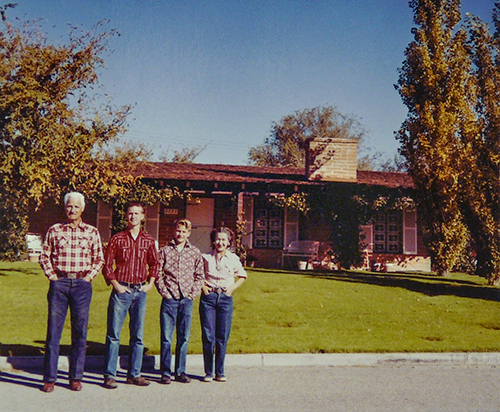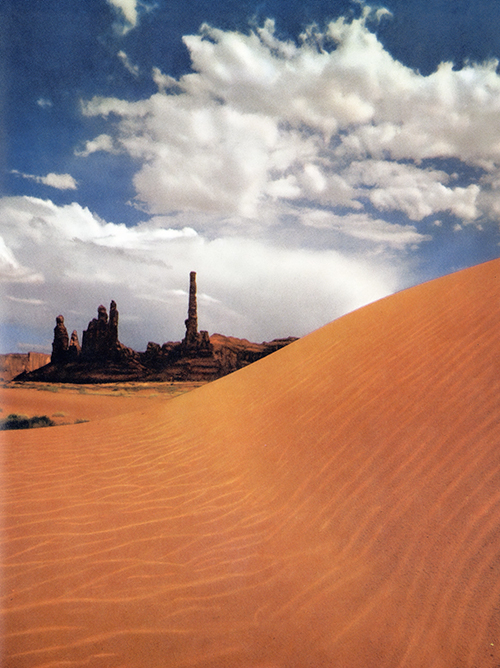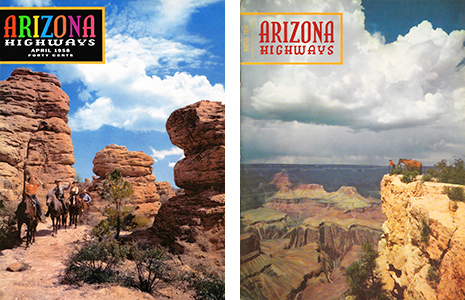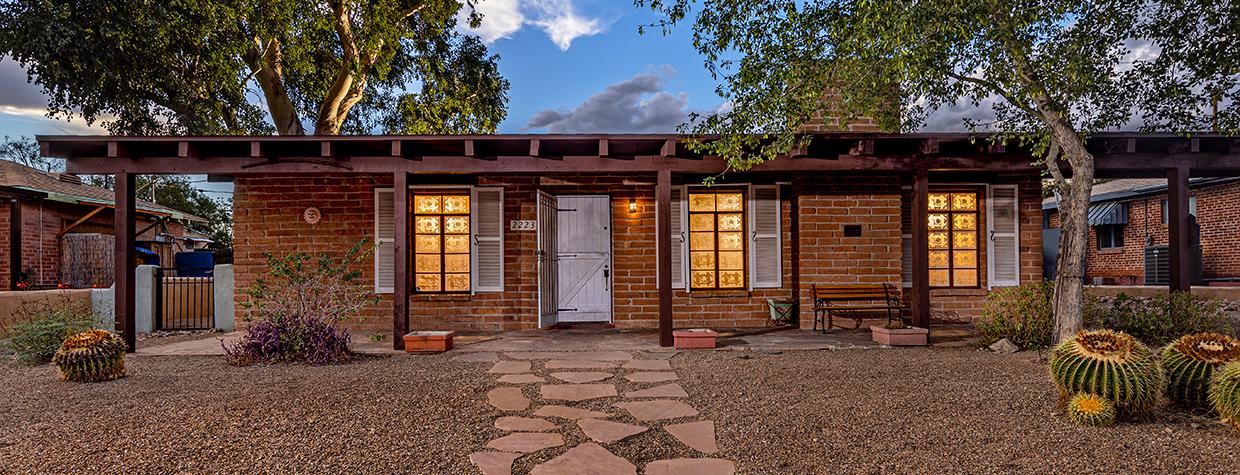From the street, this vintage Tucson house is typical of its era: low-slung, rustic in style and sporting an inviting porch that runs the entire length of its front façade. It’s not necessarily anything that would make you slam on your brakes and whip out your phone to take a shot. But a bronze plaque drilled into its burnt adobe walls tells an interesting story. The newly installed sign commemorates not only that the house, built in the mid-1940s, is on the National Register of Historic Places but also that two famous photographers — Esther Henderson and Chuck Abbott — lived there between 1950 and 1959.
While the residence has long been on the National Register as part of the surrounding Sam Hughes Neighborhood National Historic District, details about its famous artist-owners recently came to light, thanks to detailed research done by the current owners, Kathy and Michael Ostapuk.

Kathy’s mother and father bought the house from Henderson and Abbott in 1959, and Kathy inherited it in 2003 after both parents died. Sparked by a 2019 Arizona Highways article that named the photographers as being among the magazine’s most influential contributors, the Ostapuks began drilling down into the history of the previous owners and how it meshed with their own story.
“We started the research during the pandemic,” says Michael, a retired educator. “There wasn’t much else to do. Some people baked bread, but I taught middle school history for 30 years, so this was right up my alley.”
Mike discovered that Henderson and Abbott’s circuitous routes to Tucson seemed like fodder for an old Hollywood musical. Born in Illinois, Henderson worked as a dancer in New York, with her widowed father’s blessing. When she realized that a hoofer’s career span was limited, she took a photography class and, with her dad in tow, found sunshine and a studio in Tucson in 1935. She earned a reputation as spunky and a hard worker, shooting portraits and, later, landscapes that began making their way into Arizona Highways in the late 1930s, under the mentorship of Editor Raymond Carlson (the first photograph the magazine ever purchased was an image by Henderson). But in 1940, when a Tucson tourism promotion group hired a California photographer instead of Henderson, a local, to shoot publicity images, she cried foul.
Abbott, the Golden State interloper, had a background that included work on a Hawaiian pineapple plantation, service as a U.S. Army photographer during World War I, and running an exotic bird shop in New York and a casino in Florida. He wound up at a Palm Springs resort, where he organized trail rides and barbecues and posed guests for publicity images — the talent that brought him to Tucson.

Wanting to size up her new competitor, Henderson invited Abbott over for a highball. A few months later, they were engaged; they married soon after. A professional partnership was also forged. The couple, soon with two sons in tow, crisscrossed Arizona, shooting thousands of images, many of which ended up on the pages and covers of Arizona Highways and other publications.
“Esther was a bit of a unicorn when it came to photographers,” says Peter Ensenberger, the magazine’s retired director of photography. “During her career, there were very few female photographers. She could compete with any male shooter.” Of the couple, Ensenberger says, she was the driving force while Abbott was more a jack-of-all-trades. When they had an assignment, he handled the people and the business while she set the scene.
Ensenberger, who was with the magazine from 1984 to 2009, recalls working with Henderson in the 1980s to use her stock landscape images in the magazine. “One of her images, of a Mexican goldpoppy growing in cracked mud, was voted by readers in the 1970s to be the best photograph in the history of Arizona Highways,” Ensenberger says. “It would probably still stand the test of time.”
But back in Tucson, the couple began a pattern of savvy real estate purchases in addition to their photographic work. They had owned a small farm in the Fort Lowell area before buying the 1,500-square-foot, two-bedroom house in the Sam Hughes district. It was close to their lab and photo studio on Broadway Boulevard, and they used the small guest house in back as a darkroom. After they sold the house to Kathy’s parents for $38,000, Henderson and Abbott bought another house, an old Victorian on Sixth Street — their renovation of that structure was featured in a 1961 story in the Tucson Daily Citizen.
Longing for cooler climes, the photographers pulled up stakes soon thereafter, heading first to a ranch in Ouray, Colorado, before landing in Santa Cruz, California, in 1963. Abbott, 18 years Henderson’s senior, died in 1973, while Henderson died in 2008, at the age of 97.
Like the photographers, Kathy’s parents were sunshine seekers, having relocated to Tucson from New Jersey. They rented for a few months until they found Henderson and Abbott’s house on the market. Kathy grew up in the house, went to the University of Arizona to study nursing, and met and married Michael (a Tucson native) before they moved to Milwaukee and then the Phoenix area, where they raised a family. “The home was in its original condition when I lived there,” recalls Kathy, a retired hospital administrator. “The only thing Esther added was to paint lacy stencils on the windows, which we’ve kept to this day. We rent out the main house now and use the guest house when we visit Tucson.”

Michael’s months of research revealed that the surrounding Sam Hughes neighborhood, just east of downtown and named for one of Tucson’s founding figures, began developing in the early 1920s. Digging through title records, Michael discovered that their property had changed hands several times as a desert lot. The house, one of the last homes to be built in the district, had two other owners before Henderson and Abbott. Kathy recalls seeing issues of magazines, possibly including Arizona Highways, in which the photographers used the house as a backdrop for pictures.
Built by the Sundt construction firm out of burnt adobe blocks in a Mexican ranch style, the house came with a shady front porch. Inside, original colored concrete flooring, tiger oak cabinetry and the green-tiled kitchen are hallmarks of 1940s design. The beamed, vaulted living room ceiling rises to reveal north-facing clerestory windows framing the Santa Catalina Mountains.
“Since Kathy’s mother passed, we’ve been upgrading the house,” Michael says, “but we’ve been careful to stay within the historic guidelines. We’ve cleaned up the landscape, added new appliances and put in air conditioning, but everything still looks the same.”
The Ostapuks’ research on the home’s Henderson-Abbott years has been duly noted by Arizona’s State Historic Preservation Office, along with the National Register. And, in some kind of cosmic full circle, Henderson and Abbott went on to be community activists and historic preservationists in Santa Cruz, saving several Victorian homes from the wrecking ball. No doubt both would be pleased that their home from seven decades ago has now been deemed historic — and is in good hands.

